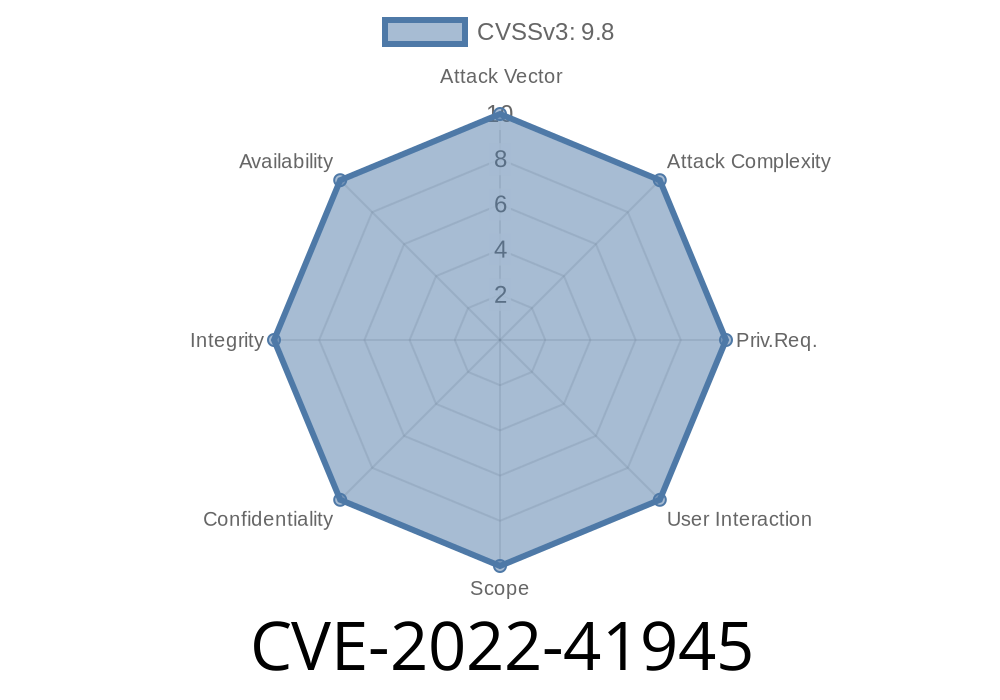A recent discovery in the popular vulnerability scanner launcher, super-xray, has uncovered a concerning Remote Code Execution (RCE) vulnerability. Specifically, this issue affects the .1-beta version and has been assigned the CVE identification number CVE-2022-41945. This post will delve into the technical details of this vulnerability, provide a code snippet to demonstrate the issue, and reference original research sources. Most importantly, we'll explain how users can mitigate this risk by updating to super-xray version .2-beta.
Exploit Details
The heart of this vulnerability lies within the fact that the URL being scanned is not properly filtered and sanitized. As a result, it is directly spliced into the command. Not only does this create a potential RCE vulnerability, but it also allows malicious actors to execute arbitrary commands on the affected user's system.
Code Snippet
To better understand this issue, let's examine a code snippet from super-xray version .1-beta that demonstrates how the unfiltered URL is incorrectly handled:
# super_xray.py - version .1-beta
def launch_scan(target_url):
# The target_url variable is not filtered and directly spliced into the command
cmd = f"xray scan -u {target_url}"
os.system(cmd)
As you can see, the target_url variable is directly added to the command string without any proper filtering or sanitization. This insecure code practice opens up the possibility for attackers to exploit the vulnerability by injecting malicious commands within the URL.
Mitigation
To effectively mitigate this security risk, users are advised to update their super-xray software to version .2-beta. The updated version addresses this vulnerability by filtering the URL input, preventing arbitrary command execution. Here's the updated code snippet for reference:
# super_xray.py - version .2-beta
def launch_scan(target_url):
# Filter the target_url properly before splicing it into the command
filtered_url = filter_url(target_url)
cmd = f"xray scan -u {filtered_url}"
os.system(cmd)
def filter_url(url):
# Implement URL filtering and sanitization here
# ...
Original References
Further details about this vulnerability, its discovery, and in-depth analysis can be found in the official resources below:
1. National Vulnerability Database (NVD) - CVE-2022-41945
2. GitHub Advisory - super-xray .1-beta RCE vulnerability
3. SecLists.org - CVE-2022-41945 super-xray .1-beta RCE vulnerability
Ensure you protect yourself and prevent any unauthorized access to your system by updating your super-xray software to the latest version. Keep an eye on official channels and security bulletins for more information and updates on this issue. Stay safe and secure in your vulnerability scanning endeavors!
Timeline
Published on: 11/21/2022 23:15:00 UTC
Last modified on: 03/01/2023 18:03:00 UTC
